Bioarchaeology by Arkadiusz Sołtysiak

Recent genomic data have revealed multiple interactions between Neanderthals and modern humans1, ... more Recent genomic data have revealed multiple interactions between Neanderthals and modern humans1, but there is currently little genetic evidence regarding Neanderthal behaviour, diet, or disease. Here we describe the shotgun-sequencing of ancient DNA from five specimens of Neanderthal calcified dental plaque (calculus) and the characterization of regional differences in Neanderthal ecology. At Spy cave, Belgium, Neanderthal diet was heavily meat based and included woolly rhinoceros and wild sheep (mouflon), characteristic of a steppe environment. In contrast, no meat was detected in the diet of Neanderthals from El Sidrón cave, Spain, and dietary components of mushrooms, pine nuts, and moss reflected forest gathering2,3. Differences in diet were also linked to an overall shift in the oral bacterial community (microbiota) and suggested that meat consumption contributed to substantial variation within Neanderthal microbiota. Evidence for self-medication was detected in an El Sidrón Neanderthal with a dental abscess4 and a chronic gastrointestinal pathogen (Enterocytozoon bieneusi). Metagenomic data from this individual also contained a nearly complete genome of the archaeal commensal Methanobrevibacter oralis (10.2× depth of coverage)—the oldest draft microbial genome generated to date, at around 48,000 years old. DNA preserved within dental calculus represents a notable source of information about the behaviour and health of ancient hominin specimens, as well as a unique system that is useful for the study of long-term microbial evolution.

Recent genomic data have revealed multiple interactions between Neanderthals and modern humans1, ... more Recent genomic data have revealed multiple interactions between Neanderthals and modern humans1, but there is currently little genetic evidence regarding Neanderthal behaviour, diet, or disease. Here we describe the shotgun-sequencing of ancient DNA from five specimens of Neanderthal calcified dental plaque (calculus) and the characterization of regional differences in Neanderthal ecology. At Spy cave, Belgium, Neanderthal diet was heavily meat based and included woolly rhinoceros and wild sheep (mouflon), characteristic of a steppe environment. In contrast, no meat was detected in the diet of Neanderthals from El Sidrón cave, Spain, and dietary components of mushrooms, pine nuts, and moss reflected forest gathering2,3. Differences in diet were also linked to an overall shift in the oral bacterial community (microbiota) and suggested that meat consumption contributed to substantial variation within Neanderthal microbiota. Evidence for self-medication was detected in an El Sidrón Neanderthal with a dental abscess4 and a chronic gastrointestinal pathogen (Enterocytozoon bieneusi). Metagenomic data from this individual also contained a nearly complete genome of the archaeal commensal Methanobrevibacter oralis (10.2× depth of coverage)—the oldest draft microbial genome generated to date, at around 48,000 years old. DNA preserved within dental calculus represents a notable source of information about the behaviour and health of ancient hominin specimens, as well as a unique system that is useful for the study of long-term microbial evolution.

Recent genomic data have revealed multiple interactions between Neanderthals and modern humans1, ... more Recent genomic data have revealed multiple interactions between Neanderthals and modern humans1, but there is currently little genetic evidence regarding Neanderthal behaviour, diet, or disease. Here we describe the shotgun-sequencing of ancient DNA from five specimens of Neanderthal calcified dental plaque (calculus) and the characterization of regional differences in Neanderthal ecology. At Spy cave, Belgium, Neanderthal diet was heavily meat based and included woolly rhinoceros and wild sheep (mouflon), characteristic of a steppe environment. In contrast, no meat was detected in the diet of Neanderthals from El Sidrón cave, Spain, and dietary components of mushrooms, pine nuts, and moss reflected forest gathering2,3. Differences in diet were also linked to an overall shift in the oral bacterial community (microbiota) and suggested that meat consumption contributed to substantial variation within Neanderthal microbiota. Evidence for self-medication was detected in an El Sidrón Neanderthal with a dental abscess4 and a chronic gastrointestinal pathogen (Enterocytozoon bieneusi). Metagenomic data from this individual also contained a nearly complete genome of the archaeal commensal Methanobrevibacter oralis (10.2× depth of coverage)—the oldest draft microbial genome generated to date, at around 48,000 years old. DNA preserved within dental calculus represents a notable source of information about the behaviour and health of ancient hominin specimens, as well as a unique system that is useful for the study of long-term microbial evolution.

Recent genomic data have revealed multiple interactions between Neanderthals and modern humans1, ... more Recent genomic data have revealed multiple interactions between Neanderthals and modern humans1, but there is currently little genetic evidence regarding Neanderthal behaviour, diet, or disease. Here we describe the shotgun-sequencing of ancient DNA from five specimens of Neanderthal calcified dental plaque (calculus) and the characterization of regional differences in Neanderthal ecology. At Spy cave, Belgium, Neanderthal diet was heavily meat based and included woolly rhinoceros and wild sheep (mouflon), characteristic of a steppe environment. In contrast, no meat was detected in the diet of Neanderthals from El Sidrón cave, Spain, and dietary components of mushrooms, pine nuts, and moss reflected forest gathering2,3. Differences in diet were also linked to an overall shift in the oral bacterial community (microbiota) and suggested that meat consumption contributed to substantial variation within Neanderthal microbiota. Evidence for self-medication was detected in an El Sidrón Neanderthal with a dental abscess4 and a chronic gastrointestinal pathogen (Enterocytozoon bieneusi). Metagenomic data from this individual also contained a nearly complete genome of the archaeal commensal Methanobrevibacter oralis (10.2× depth of coverage)—the oldest draft microbial genome generated to date, at around 48,000 years old. DNA preserved within dental calculus represents a notable source of information about the behaviour and health of ancient hominin specimens, as well as a unique system that is useful for the study of long-term microbial evolution.

Recent genomic data have revealed multiple interactions between Neanderthals and modern humans1, ... more Recent genomic data have revealed multiple interactions between Neanderthals and modern humans1, but there is currently little genetic evidence regarding Neanderthal behaviour, diet, or disease. Here we describe the shotgun-sequencing of ancient DNA from five specimens of Neanderthal calcified dental plaque (calculus) and the characterization of regional differences in Neanderthal ecology. At Spy cave, Belgium, Neanderthal diet was heavily meat based and included woolly rhinoceros and wild sheep (mouflon), characteristic of a steppe environment. In contrast, no meat was detected in the diet of Neanderthals from El Sidrón cave, Spain, and dietary components of mushrooms, pine nuts, and moss reflected forest gathering2,3. Differences in diet were also linked to an overall shift in the oral bacterial community (microbiota) and suggested that meat consumption contributed to substantial variation within Neanderthal microbiota. Evidence for self-medication was detected in an El Sidrón Neanderthal with a dental abscess4 and a chronic gastrointestinal pathogen (Enterocytozoon bieneusi). Metagenomic data from this individual also contained a nearly complete genome of the archaeal commensal Methanobrevibacter oralis (10.2× depth of coverage)—the oldest draft microbial genome generated to date, at around 48,000 years old. DNA preserved within dental calculus represents a notable source of information about the behaviour and health of ancient hominin specimens, as well as a unique system that is useful for the study of long-term microbial evolution.

Recent genomic data have revealed multiple interactions between Neanderthals and modern humans1, ... more Recent genomic data have revealed multiple interactions between Neanderthals and modern humans1, but there is currently little genetic evidence regarding Neanderthal behaviour, diet, or disease. Here we describe the shotgun-sequencing of ancient DNA from five specimens of Neanderthal calcified dental plaque (calculus) and the characterization of regional differences in Neanderthal ecology. At Spy cave, Belgium, Neanderthal diet was heavily meat based and included woolly rhinoceros and wild sheep (mouflon), characteristic of a steppe environment. In contrast, no meat was detected in the diet of Neanderthals from El Sidrón cave, Spain, and dietary components of mushrooms, pine nuts, and moss reflected forest gathering2,3. Differences in diet were also linked to an overall shift in the oral bacterial community (microbiota) and suggested that meat consumption contributed to substantial variation within Neanderthal microbiota. Evidence for self-medication was detected in an El Sidrón Neanderthal with a dental abscess4 and a chronic gastrointestinal pathogen (Enterocytozoon bieneusi). Metagenomic data from this individual also contained a nearly complete genome of the archaeal commensal Methanobrevibacter oralis (10.2× depth of coverage)—the oldest draft microbial genome generated to date, at around 48,000 years old. DNA preserved within dental calculus represents a notable source of information about the behaviour and health of ancient hominin specimens, as well as a unique system that is useful for the study of long-term microbial evolution.

Archaeological interpretations are frequently affected by wishful thinking. This problem may be r... more Archaeological interpretations are frequently affected by wishful thinking. This problem may be reduced by consciously arranging the interpretation process, e.g. with use of a simple interpretative index. The fi rst step is the defi nition of all possible and imaginable interpretations of a given phenomenon, then all possible pieces of evidence pro or contra the given interpretation should be identifi ed and listed. When the list of interpretations and the list of criteria are ready, our evaluation of signifi cance of gathered evidence can be arranged in a table using the following scale: –2 (the piece of evidence falsifi es a given interpretation), –1 (it weakens the interpretation), 0 (the criterion is not adequate for a given interpretation), +1 (the piece of evidence supports the interpretation), +2 (it confi rms the interpretation). The interpretative index is the arithmetic mean of all positive and negative values for a given interpretation. At the same time it is possible to calculate the diagnostic value of the whole gathered evidence as a proportion of the criteria for which the obtained values were different from zero. The ultimate result of such somewhat formalised procedure is the accepted interpretation with the highest interpretative index. The effectiveness of such method is tested here on a case study of the cranium 13/05 found in the Frombork cathedral and identified as the remains of Nicolaus Copernicus.
Seven tumuli graves with preserved human remains were explored at the Mughaira burial field in th... more Seven tumuli graves with preserved human remains were explored at the Mughaira burial field in the course of four excavation seasons (2007)(2008)(2009)(2010). The minimum number of individuals buried in these graves was 26 [see -1] and the number of individuals per grave ranged from one (SMQ 33, SMQ 35B, SMQ 38, SMQ 45) through two (SMQ 30) and four (SMQ 35A) to 16 (SMQ 49). Most skeletons were very fragmented and affected by various taphonomical agents.

Nemrik 9/10 is a Pre-Pottery Neolithic site in Northern Iraq that was excavated in 1985-1989 by S... more Nemrik 9/10 is a Pre-Pottery Neolithic site in Northern Iraq that was excavated in 1985-1989 by S.K. Kozłowski. The
remains of at least 96 individuals were found in the excavated strata, most of which were dated to ca 9100–8600 BP. The bones were in poor condition, but several observations of taphonomic effects and indicators of diet, stress, physical activity, trauma and diseases were possible. First, a major change in burial practices occurred in Nemrik after ca 8900 BP. Prior to this date both adults and subadults were buried in domestic contexts. Moreover, there is some evidence of prolonged exposure of bodies. Later, the extramural cemetery was established for adults and multiple burials (of commingled elements) were replaced by single burials with no evidence of post mortem exposure. Inhabitants of Nemrik were farmers who based their diet on roughly processed cereals, but the pattern of dental wear suggests that it may have been comparable or even softer on average, than the diet of later Northern Mesopotamia inhabitants. Dental caries was extremely rare, but a high rate of linear enamel hypoplasia suggests stressful living conditions. The pattern of trauma and injuries is typical for a farming population and no evidence of interpersonal violence or injuries related to hunting was observed. In this respect Nemrik differs strikingly from the Proto-Neolithic cemetery found in the Shanidar Cave.
During recent archaeological excavations at the northern mound of Tepe Sialk, a small cluster of ... more During recent archaeological excavations at the northern mound of Tepe Sialk, a small cluster of burials was found in a settlement layer dated to the latest phase of the Late Neolithic period. Among the six burials recovered, four were jar burials including cremains, one was a plain pit grave with no traces of cremation and one was a double burial with both cremated and uncremated bones. The white colour of the cremains indicated that, except for one cremated body, all were burnt at temperatures exceeding 700/800°C and most were covered by red ochre. In two cases, the spatial distribution of bone fragments belonging to various body parts revealed that the bones may have been systematically collected from the funeral pyre and placed into funerary vessels.
American journal of physical anthropology, 2013
Age-at-death profiles obtained using the minimum number of individuals (MNI) for mass deposits of... more Age-at-death profiles obtained using the minimum number of individuals (MNI) for mass deposits of commingled human remains may be biased by over-representation of subadult individuals. A computer simulation designed in the R environment has shown that this effect may lead to misinterpretation of such samples even in cases where the completeness rate is relatively high. The simulation demonstrates that the use of the Most Likely Number of Individuals (MLNI) substantially reduces this bias.
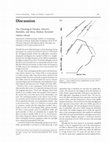
Probably the most influential paper in bioarchaeology during past quarter of a century was that b... more Probably the most influential paper in bioarchaeology during past quarter of a century was that by Wood et al. (1992) about the osteological paradox. Before this publication, researchers interpreted osteological stress markers (OSMs) in a straightforward way: the higher frequency of an OSM in a population, the higher average level of stress. Wood and colleagues noticed that this is not necessarily true, as some people may die so rapidly that OSMs do not develop. In other words, low frequency of OSMs may be the consequence of low stress level but also of high stress level.
The idea of the osteological paradox raised vivid discussion; some authors denied it (e.g., Cohen 1994) or at least ignored it in their research, while some tried to find a solution to the paradox. Finally, the most commonly accepted conclusion was that OSMs cannot be interpreted alone but need as extensive an archaeological and environmental contextualization as possible (Agarwal and Glencross 2011; Wright and Yoder 2003).
However, there is one consequence of the selective mortality paradox that seems to be generally missing in the past and ongoing discussion...
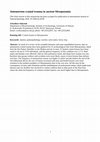
In result of a review of the available literature and some unpublished sources, data on antemorte... more In result of a review of the available literature and some unpublished sources, data on antemortem cranial trauma have been gathered for 25 archaeological sites from Mesopotamia, dated from the Pre-Pottery Neolithic to the Modern period. In total, 31 healed cranial lesions have been
noted in 28 out of 1278 individuals, and the general frequency of this condition was 2.2 %. Both males and females were affected, with no clear preference noted, and sharp-force trauma was rare, therefore intra-group violence and accidents were more likely causes of most lesions than military activities. The frequency of antemortem trauma was higher in earlier periods (before the end of the 3rd millennium BCE); the size of lesions increased with time and healed lesions were more common in the northern periphery of Mesopotamia than in the core area. All this may be the
consequence of early state formation and the establishment of professional armies which made most farmers and city dwellers less involved in violent conflicts than in other parts of the Near East where the observed frequency of violence-related injuries was much higher than in Mesopotamia.

Homo : internationale Zeitschrift für die vergleichende Forschung am Menschen, 2013
Fifty nine dental non-metric traits were scored using Arizona State University Dental Anthropolog... more Fifty nine dental non-metric traits were scored using Arizona State University Dental Anthropology System on a sample of teeth from 350 human skeletons excavated at three sites in the lower middle Euphrates valley. The dataset was divided into six chronological subsets: Early Bronze Age, Middle Bronze Age, Early Iron Age with Neo-Assyrian period, Classical/Late Antiquity, Early Islamic (Umayyad and Abbasid) period and Modern period. The matrix of Mean Measure of Divergence values exhibited temporal homogeneity of the sample with only dental nonmetric trait scores in the Modern subset differing significantly from most other subsets. Such a result suggests that no major gene flow occurred in the middle Euphrates valley between the 3 rd millennium BCE and the early 2 nd millennium CE. Only after the Mongolian invasion and large depopulation of northern Mesopotamia in the 13 th century CE a major population change occurred when the area was taken over in the 17 th century by Bedouin tribes from the Arabian Peninsula.
Homo : internationale Zeitschrift für die vergleichende Forschung am Menschen, 2012
Dental caries is an infectious disease caused by oral acidophilic bacteria feeding on fermentable... more Dental caries is an infectious disease caused by oral acidophilic bacteria feeding on fermentable sugars, e.g. Streptococcus mutans. The frequency of dental caries in Neandertals was very low. This was usually explained as the result of a low-sugar diet. Recent research, however, revealed some regional differences between European and Near Eastern Neandertals, with the latter consuming considerable amounts of plants including highly cariogenic dates. This discovery, compared with the results of research on genetic diversity of S. mutans, may suggest that this species, and perhaps other most virulent species, were absent in the oral flora of Neandertals.
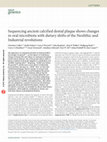
Nature genetics, 2013
The importance of commensal microbes for human health is increasingly recognized -5 , yet the imp... more The importance of commensal microbes for human health is increasingly recognized -5 , yet the impacts of evolutionary changes in human diet and culture on commensal microbiota remain almost unknown. Two of the greatest dietary shifts in human evolution involved the adoption of carbohydrate-rich Neolithic (farming) diets 6,7 (beginning ~0,000 years before the present 6,8 ) and the more recent advent of industrially processed flour and sugar (in ~850) 9 . Here, we show that calcified dental plaque (dental calculus) on ancient teeth preserves a detailed genetic record throughout this period. Data from 34 early European skeletons indicate that the transition from hunter-gatherer to farming shifted the oral microbial community to a disease-associated configuration. The composition of oral microbiota remained unexpectedly constant between Neolithic and medieval times, after which (the now ubiquitous) cariogenic bacteria became dominant, apparently during the Industrial Revolution. Modern oral microbiotic ecosystems are markedly less diverse than historic populations, which might be contributing to chronic oral (and other) disease in postindustrial lifestyles.
Journal of Field …, Jan 1, 2011
Excavations and surveys carried out from the mid-1990s through 2009 at Tell Brak, northeast Syria... more Excavations and surveys carried out from the mid-1990s through 2009 at Tell Brak, northeast Syria, have focused on reconstructing the socioeconomic complexity and physical growth of one of northern Mesopotamia's earliest urban settlements. The recent discovery of several mass graves on the edge of the city, created at an important threshold in its physical expansion (ca. 3800-3600 B.C.), adds to a longstanding debate about the connection between the growth of early city-states and violent conflict. These graves, with their population of as many as several hundred primarily sub-adults and young adults, are interpreted as the result of large-scale violent events and may provide evidence for the post-mortem treatment of enemies. They offer a strong counterpoint to the dominant reconstruction of a peaceful prehistory in the region.
Journal of Archaeological Science, 2011
Dental microwear features in a sample of 10 human teeth from Tell Ashara and Tell Masaikh, two ar... more Dental microwear features in a sample of 10 human teeth from Tell Ashara and Tell Masaikh, two archaeological sites in the Middle Euphrates valley, Syria, were compared for possible evidence of a shift in grinding technology in Mesopotamia-parallel to the welldocumented introduction of large rotary querns and watermills in the Graeco-Roman world. Two chronological subsets (Bronze Age, n=4 and Late Roman/Islamic period, n=6) differred substantially and features related to a more abrasive diet (broad lines, pits and punctures visible on SE micrographs) were significantly less frequent in the later subsample which may indicate that the shift in cereal grinding technology occured in Mesopotamia before the Late Roman period.
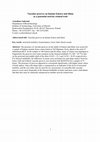
The presence of vascular grooves on the shafts of femora and tibiae was scored for a sample of hu... more The presence of vascular grooves on the shafts of femora and tibiae was scored for a sample of human remains from a mass burial at Tell Majnuna, Syria, dated to the early fourth millennium bce. In the sample of 140 femora and 64 tibiae, many of which were damaged or fragmented, the grooves were most common on the femoral midshaft (31/108 = 28.7%) and on the proximal and middle shaft of the tibia (10/45 = 22.2 and 14/54 = 26.0%, respectively). For femoral midshafts, the difference in mean cross-sectional size and shape indices between bones with and without vascular grooves was checked with multivariate analysis of variance for a sample of 51 bones. The presence of grooves appeared to correspond significantly with higher mean values of both indices. As the shape index is interpreted as an indicator of the level of terrestrial mobility and the size index may be used for sex assessment, it is possible that vascular grooves occur more frequently at the femoral midshafts of men and more active individuals, and thus they may be cautiously interpreted as another activity-related trait.



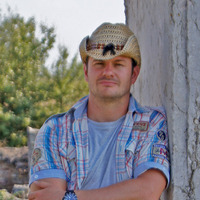






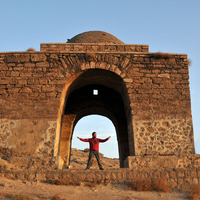
Uploads
Bioarchaeology by Arkadiusz Sołtysiak
remains of at least 96 individuals were found in the excavated strata, most of which were dated to ca 9100–8600 BP. The bones were in poor condition, but several observations of taphonomic effects and indicators of diet, stress, physical activity, trauma and diseases were possible. First, a major change in burial practices occurred in Nemrik after ca 8900 BP. Prior to this date both adults and subadults were buried in domestic contexts. Moreover, there is some evidence of prolonged exposure of bodies. Later, the extramural cemetery was established for adults and multiple burials (of commingled elements) were replaced by single burials with no evidence of post mortem exposure. Inhabitants of Nemrik were farmers who based their diet on roughly processed cereals, but the pattern of dental wear suggests that it may have been comparable or even softer on average, than the diet of later Northern Mesopotamia inhabitants. Dental caries was extremely rare, but a high rate of linear enamel hypoplasia suggests stressful living conditions. The pattern of trauma and injuries is typical for a farming population and no evidence of interpersonal violence or injuries related to hunting was observed. In this respect Nemrik differs strikingly from the Proto-Neolithic cemetery found in the Shanidar Cave.
The idea of the osteological paradox raised vivid discussion; some authors denied it (e.g., Cohen 1994) or at least ignored it in their research, while some tried to find a solution to the paradox. Finally, the most commonly accepted conclusion was that OSMs cannot be interpreted alone but need as extensive an archaeological and environmental contextualization as possible (Agarwal and Glencross 2011; Wright and Yoder 2003).
However, there is one consequence of the selective mortality paradox that seems to be generally missing in the past and ongoing discussion...
noted in 28 out of 1278 individuals, and the general frequency of this condition was 2.2 %. Both males and females were affected, with no clear preference noted, and sharp-force trauma was rare, therefore intra-group violence and accidents were more likely causes of most lesions than military activities. The frequency of antemortem trauma was higher in earlier periods (before the end of the 3rd millennium BCE); the size of lesions increased with time and healed lesions were more common in the northern periphery of Mesopotamia than in the core area. All this may be the
consequence of early state formation and the establishment of professional armies which made most farmers and city dwellers less involved in violent conflicts than in other parts of the Near East where the observed frequency of violence-related injuries was much higher than in Mesopotamia.
remains of at least 96 individuals were found in the excavated strata, most of which were dated to ca 9100–8600 BP. The bones were in poor condition, but several observations of taphonomic effects and indicators of diet, stress, physical activity, trauma and diseases were possible. First, a major change in burial practices occurred in Nemrik after ca 8900 BP. Prior to this date both adults and subadults were buried in domestic contexts. Moreover, there is some evidence of prolonged exposure of bodies. Later, the extramural cemetery was established for adults and multiple burials (of commingled elements) were replaced by single burials with no evidence of post mortem exposure. Inhabitants of Nemrik were farmers who based their diet on roughly processed cereals, but the pattern of dental wear suggests that it may have been comparable or even softer on average, than the diet of later Northern Mesopotamia inhabitants. Dental caries was extremely rare, but a high rate of linear enamel hypoplasia suggests stressful living conditions. The pattern of trauma and injuries is typical for a farming population and no evidence of interpersonal violence or injuries related to hunting was observed. In this respect Nemrik differs strikingly from the Proto-Neolithic cemetery found in the Shanidar Cave.
The idea of the osteological paradox raised vivid discussion; some authors denied it (e.g., Cohen 1994) or at least ignored it in their research, while some tried to find a solution to the paradox. Finally, the most commonly accepted conclusion was that OSMs cannot be interpreted alone but need as extensive an archaeological and environmental contextualization as possible (Agarwal and Glencross 2011; Wright and Yoder 2003).
However, there is one consequence of the selective mortality paradox that seems to be generally missing in the past and ongoing discussion...
noted in 28 out of 1278 individuals, and the general frequency of this condition was 2.2 %. Both males and females were affected, with no clear preference noted, and sharp-force trauma was rare, therefore intra-group violence and accidents were more likely causes of most lesions than military activities. The frequency of antemortem trauma was higher in earlier periods (before the end of the 3rd millennium BCE); the size of lesions increased with time and healed lesions were more common in the northern periphery of Mesopotamia than in the core area. All this may be the
consequence of early state formation and the establishment of professional armies which made most farmers and city dwellers less involved in violent conflicts than in other parts of the Near East where the observed frequency of violence-related injuries was much higher than in Mesopotamia.
Year: 2010
Format: Paperback, 428p, 88 plates
ISBN: 9780903472272
Price: £25.00
Link to purchase: http://www.oxbowbooks.com/oxbow/once-there-was-a-place.html
This volume presents the research of the British team within the modern excavations at the northern Mesopotamian site of Chagar Bazar, resumed in 1999 after a 62-year hiatus since the excavations of Max Mallowan. It incorporates settlement archaeology approaches and theoretical ideas of “place” in exploring the site and its internal and external landscapes. The primary focus is the settlement during the early 2nd millennium BC (Old Babylonian Period, post-Samsi-Addu), its final ancient occupation. The authors have taken a contextual approach, integrating aspects of the settlement’s internal variations, including both community and private architecture, together with burial practices and symbolic and functional material culture. While its political importance varied, Chagar Bazar’s persistence of occupation meant that it played a key role within the regional landscape as a meaningful landmark.
survey. At present, the maximum height of the cultural strata is c. 4m. Due to the construction of Ibn Sina Petrochemical Context at this place, rescue archaeological excavations in four areas were undertaken at the site in the winter of 2016 and spring of 2017 under the direction of Esmail Hemati Azandaryani (Figure 1). In the largest area, Area A, architectural remains have been found, which have been interpreted as a
temple dated to the Iron Age III (i.e. the Median period) (Hemati Azandaryani 2017).
Authors not found on Academia:
Torben Rick, Tim Denham, Jonathan Driver, Heather Thakar, Amber L. Johnson, R. Alan Covey, Jason Herrmann, Carrie Hritz, Catherine Kearns, Dan Lawrence, Michael Morrison, Robert J. Speakman, Martina L. Steffen, Keir M. Strickland, M. Cemre Ustunkaya, Jeremy Powell, Alexa Thornton.